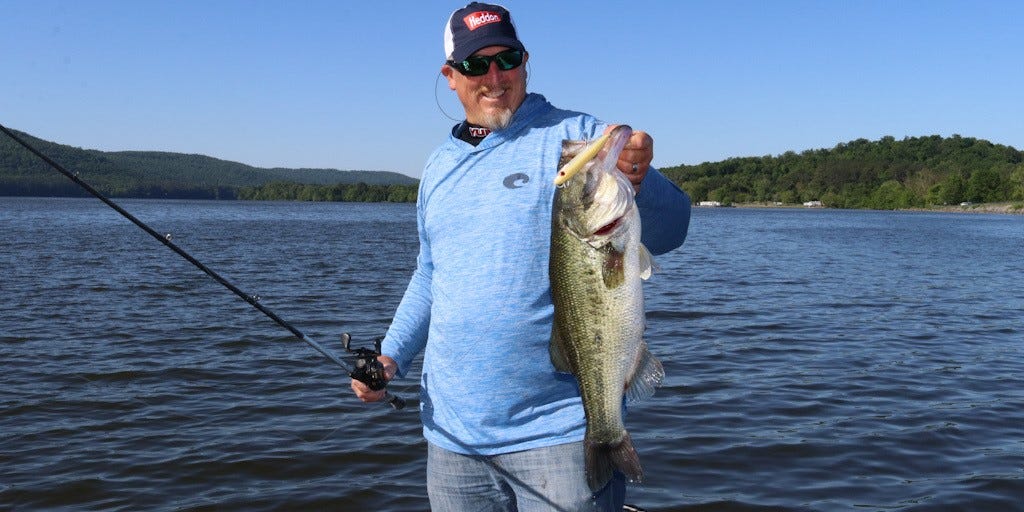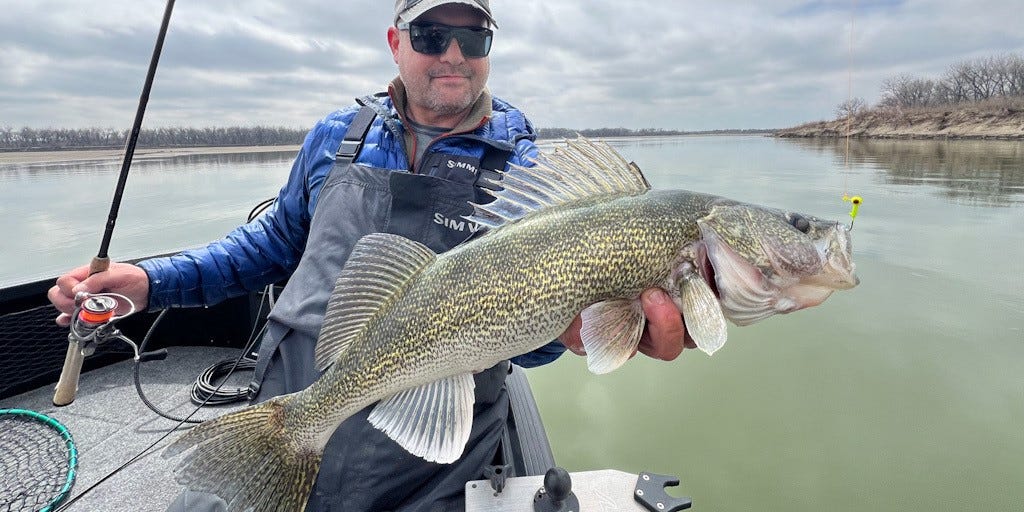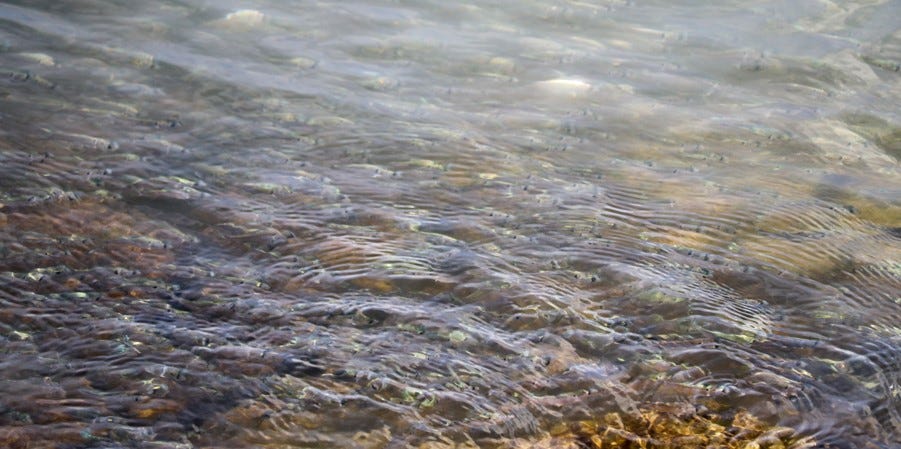- May 12, 2025
Kayak Carolina Rigging: Your Guide to Catching More Bass
A Carolina rig provides overlooked virtues for bass fishing from a kayak. We’ll look at those virtues and important considerations for successful Carolina rigging.


An advantage of a kayak for fishing is that it is quiet and very stealthy on the water, but that doesn’t mean it’s only suited for light tackle approaches. Sometimes, it is fun and productive to throw some heavy metal from the ‘yak when fishing for bass. Carolina rigging is one such application.
It seems these days that fewer anglers fish the old ball and chain, and even fewer throw a Carolina rig from a kayak. I’m going to break down why Carolina rigging is a great technique that too many anglers overlook and share some tips about fishing a Carolina rig, from a kayak or otherwise!
Carolina Rigging Basics
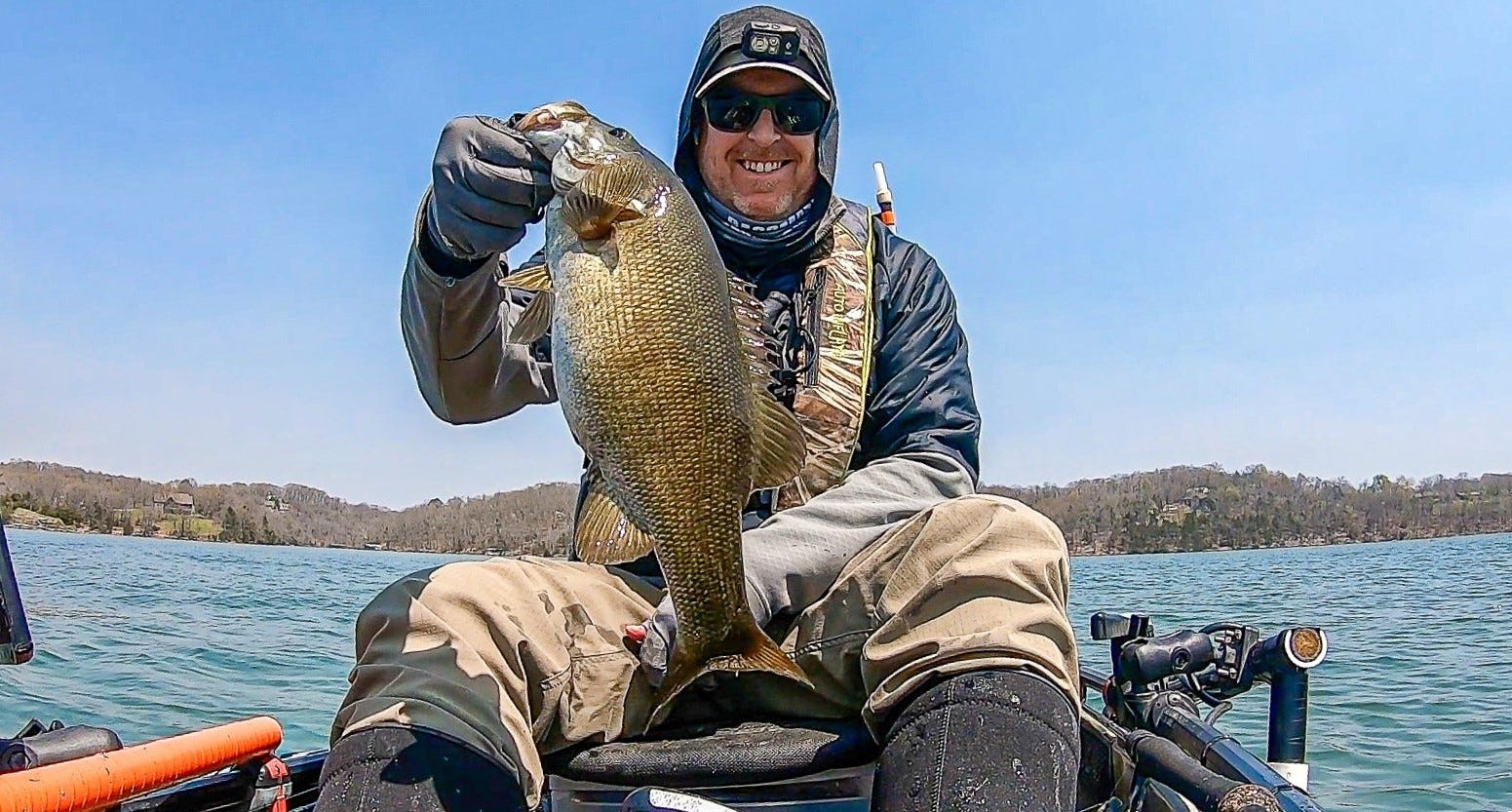

Let’s start with the technique and why it is useful. It is a rig designed to fish along the bottom while allowing a weightless bait to float or flutter uninhibited to tempt the bass. You can fish a Carolina rig at any bottom depth, but it is especially effective for medium depths and deeper water. It is handy whenever the bass hold close to the bottom. A Carolina rig also serves as a great tool for gauging the bottom composition. Dragging a Carolina rig gives you a feel of the bottom so you can discern whether it is a hard bottom, if rocks are present, or if it is more soil or vegetation.
The simplest explanation of how to fish the rig is that you move it along at a variable cadence while keeping your weight in constant contact with the bottom. Usually, it is best to sweep your rod from front to the side and keep the rod tip level or low as you do that.
Although a Carolina rig is generally set up the same way, there are many variables you can introduce, based on your preference or the conditions. I’ve used it as a heavy-duty rig to catch fish deep and as a finesse setup for shallower applications.
Primary Components of a Carolina Rig
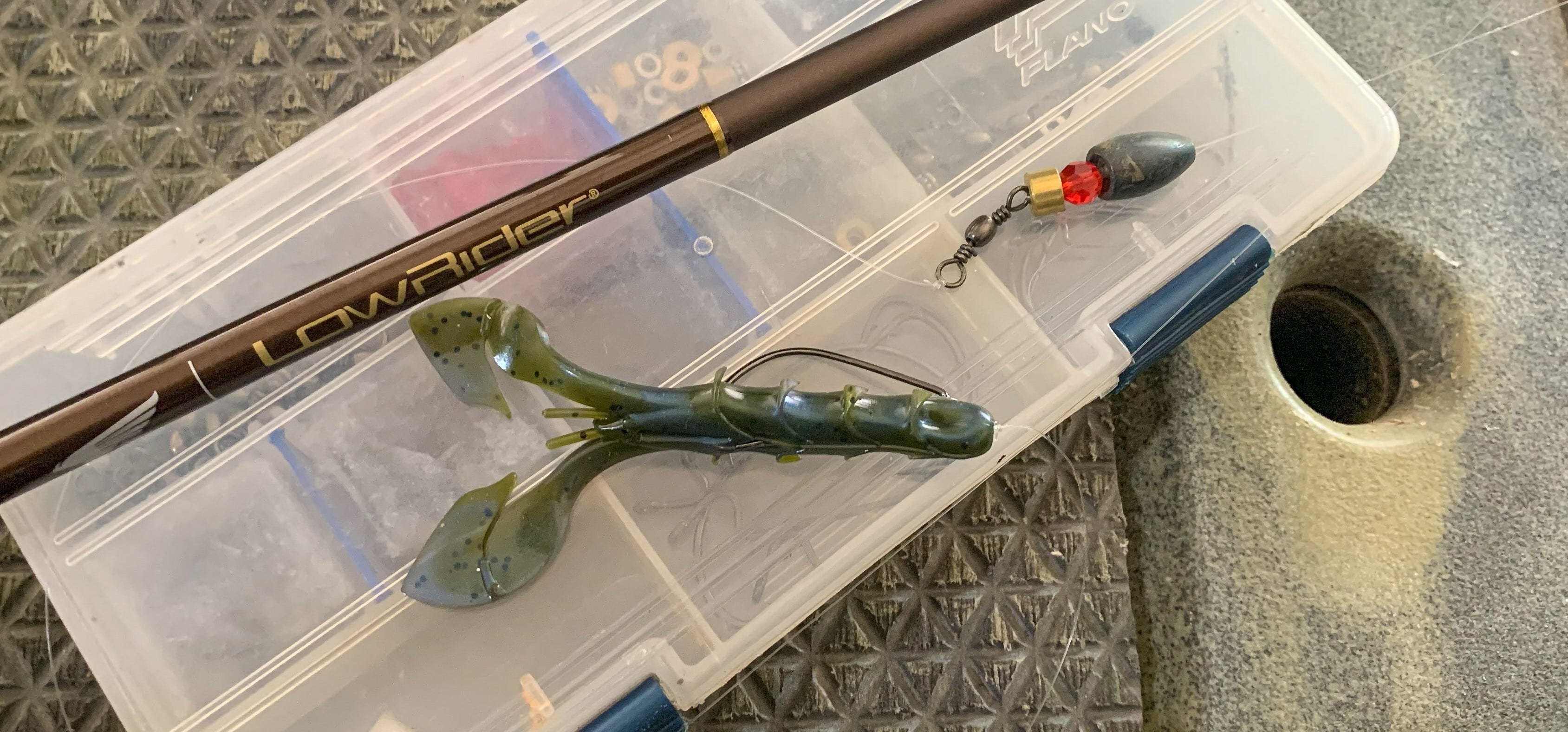

Hook - At the very end of the line is your hook. More often than not, I’ll opt for a lightweight EWG (extra wide gap) hook so that there’s room for the bait to collapse when setting the hook.
- Leader - The hook is tied to a leader. Opinions vary regarding line type, but I’ve used monofilament and fluorocarbon with similar results. The length of the leader can vary based on conditions. I prefer a longer leader for clearer water.
- Swivel - Next on the line is a swivel. Different anglers swear by different swivels (barrel, crane, etc.), but I don’t think it matters much. The main point is that the swivel keeps your line from twisting as you work the bait.
- Brass Ticker - I’m old-school with my rigging. While a lot of anglers don’t use one, the next component on my line is a brass ticker, which is a small brass cylinder that goes right above the swivel. This helps protect the knot on the swivel, but more importantly helps make a clicking sound when it impacts the glass bead that comes next. Brass helps it make the key clicking noise.
- Glass Bead - The glass bead goes right against the brass ticker. Beads come in assorted sizes and are usually red or clear. I don’t think the color matters. You can use a hard plastic bead, but I prefer the glass.
- Weight - The weight comes in at the top of the rig and is a critical component. Use a slip-sinker style that can move up and down the main line along with the glass and brass. It’s generally best to fish with the lightest weight possible to keep it on the bottom. That might mean a 1-ounce weight for fishing deep, or as light as a 1/4 ounce for fishing shallow. Carolina rig weights usually are cylindrical or egg-shaped.
Fishing the Carolina Rig from a Kayak
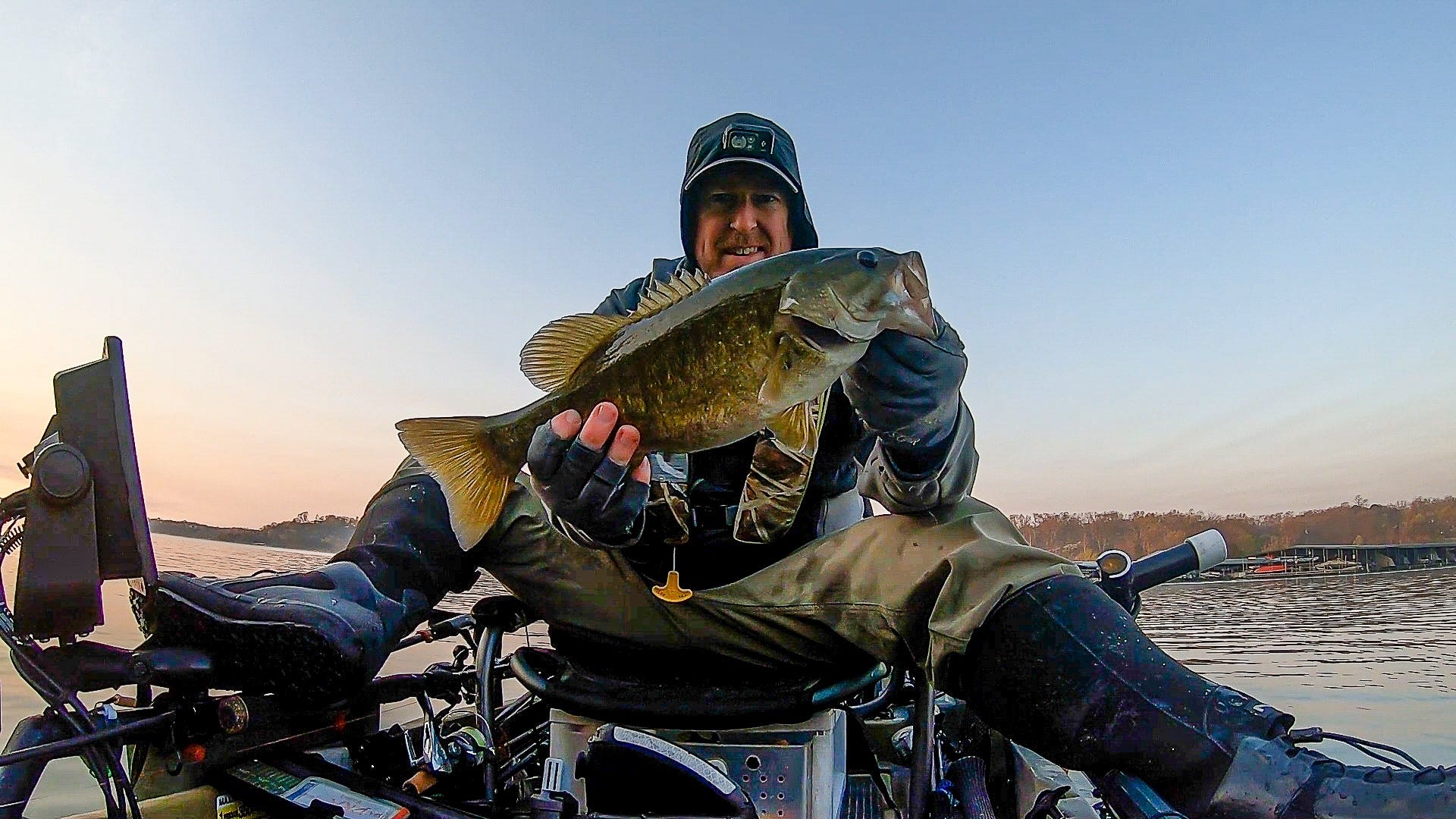

Let’s talk about how and where to fish a Carolina rig, especially from a kayak, starting with some of the obvious places that bass tend to gather. Points, ledges, humps and roadbeds are common destinations for bass to hang out. Because these are all bottom structures, they can all be fished effectively with this technique. Slowly work your rig along the bottom, maintaining contact as much as possible.
So why is this a great technique to fish from a kayak? Fishing this kind of structure doesn’t require the extreme precision that can be challenging from a kayak. With this approach you can just target a hump or a point, dragging your rig and not worrying about hitting a specific spot every time. In fact, it is helpful for finding fish for the rig to hit various parts of the structure. Also, because it is a slow presentation, you don’t have to be able to move quickly down the bank. Fishing the Carolina rig is a more methodical presentation versus running down the bank quickly with a crankbait or spinnerbait.
A bite can vary from a tick to just feeling that spongy weight that only a fish can create. Leverage from a kayak isn’t great and can hamper the hookset. With a Carolina rig, this is even more of a problem. To overcome this, you need to be disciplined and do the same hookset every time, regardless of the bite type. Point your rod directly at your bait and quickly reel up all the slack. Then, do a sharp sweeping motion to one side to set the hook. Sweep as far as you can to ensure a good hookup.
Rod, Reel & Line
- Rod - Usually a 7-foot or slightly longer rod works best, with enough power to set that hook from a long distance and deeper water.
- Reel - I mentioned taking up slack before setting the hook, and sometimes you need to retrieve your line quickly to make another cast. For this reason, I like high gear ratio baitcast reels in the 7.1:1 or 8.1:1 range.
- Line - Everyone has their own philosophy on line for a Carolina rig. The leader should be a monofilament or fluorocarbon line to minimize visibility. The main line is where much debate occurs. Many will use 20- to 40-pound test braid in a neutral color. I prefer 12- to 15-pound fluorocarbon, which I think handles better for the way I like to fish. I also don’t want my weight to get caught on a rock or brush and be unable to break it off.
My Top 5 Carolina Rig Baits
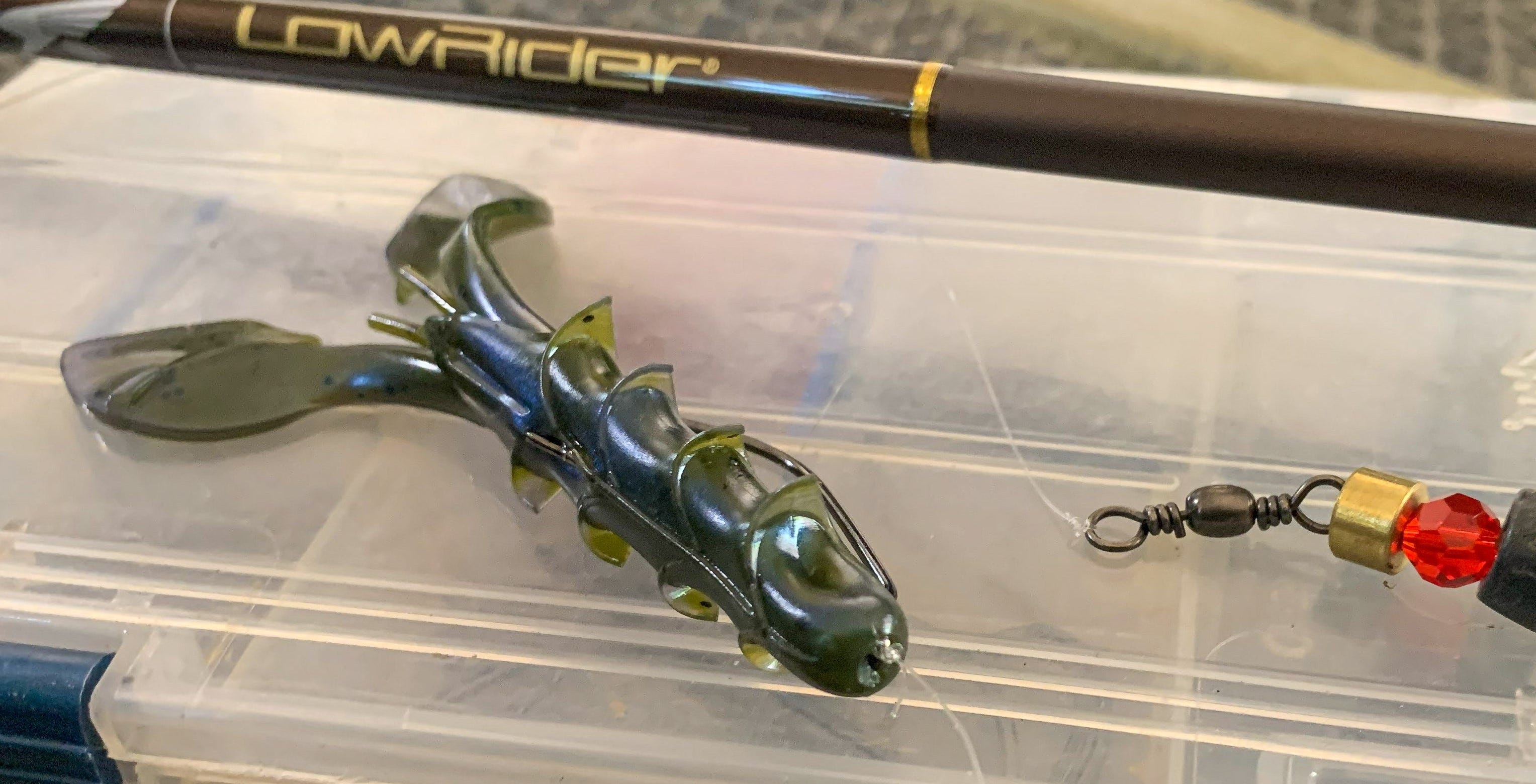

- YUM Lizard - Old school favorite, especially in the spring. Curly tail and appendages give it some action while the thin torso keeps it subtle.
- YUM Dinger - Especially if you are fishing slow, the Dinger is a great “do nothing” option that you can hook Texas or wacky style.
- YUM Spine Craw - Great crawfish imitator that has some nice action from the flapping claws while moving.
- YUM Ribbontail - Good in warmer weather, with a slim profile but good action from the tail section.
- YUM Christie Critter - Great for dirtier water situations. The bulkier profile makes it easier for fish to find, and colors like Junebug or Bama Magic help with visibility.
Get out and give the Carolina rig a try. It can be a productive and fun way to catch bass. It’s also a great way for a kayak angler to fish deeper because of the heavy weight and easy presentation style. Hit those points, roadbeds, ledges, and humps, and you may be surprised how many bass you can catch!

